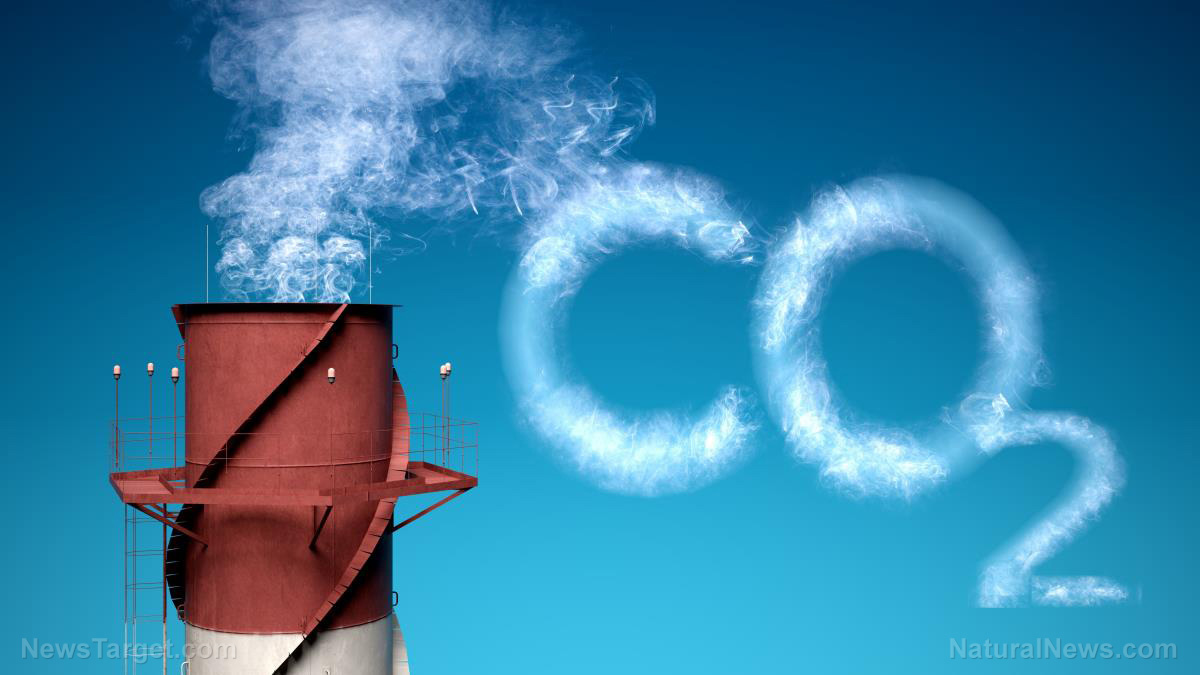Climate models to be scrapped? Scientists “retract” previous belief about carbon dioxide levels during last warming period
10/18/2017 / By Isabelle Z.

As if the conflicting information and endless debates about climate change and carbon dioxide levels were not confusing enough, a new study has found that carbon dioxide levels were actually much lower than previously believed during the last “warm” period on the planet, illustrating just how difficult it is to make conclusive statements about the topic.
Earth’s early Eocene period, also known as the Super Greenhouse period, was commonly believed to have concentration levels of carbon dioxide of as much as 2,000 parts per million (ppm). However, Dartmouth College researchers have discovered that it could have been less than 1,000 ppm – a difference of half! This could also mean that carbon dioxide is not the primary driver of planetary warming events, as other factors now have stronger weight on the final result.
To put this in perspective, the levels of carbon dioxide that are currently observed at the Mauna Loa Observatory of the National Oceanic and Atmospheric Administration (NOAA) are roughly 400 ppm.
The Super Greenhouse period is often studied by climate researchers to gain a clearer understanding of how the planet has historically responded to carbon dioxide level changes and to help form climate projections. It began around 60 million years ago and ended roughly 40 million years ago. During this time period, the Antarctic and Arctic were believed to be free of ice, and temperatures were around 10 degrees Celsius warmer than they currently are.
Five extreme warmth periods occurred during the early Eocene when the planet’s temperatures rose by as much as 8 degrees Celsius further on top of the 10-degree hotter average that characterized the period. This means that the temperature was 32 degrees Fahrenheit hotter on average than today, which is not an insignificant difference. Even though power plants and cars were very much unheard of 56 million years ago, the same carbon was released into the atmosphere. Researchers could never quite explain where that carbon had come from and how it was released until now.
Novel method led to surprising finding
The researchers turned to a new method to help reconstruct the levels of carbon dioxide that have been associated with the rises in temperature during the early Eocene period. They used sediment samples taken from deep-sea and land drilling sites and assessed their carbon dioxide concentrations. Using the carbon-12 to carbon-13 isotope ratio from these samples, they determined that the carbon most likely can be traced to thawing permafrost at the time.
Dartmouth College Obering Postdoctoral Fellow Ying Cui said, “This changes our understanding of what the concentration of carbon dioxide should be in relationship to global temperature as well as how we should revisit climate models in order to better project future climate change.”
Despite their useful finding, it is still uncertain what could have triggered the warming that spurred the release of the extra carbon into the planet’s atmosphere. Other research shows that water vapor and extreme volcanic activity in earlier warming periods plays a role.
Could this technique be used to provide valuable insight on a wider scale?
Now, Cui says the challenge is reconstructing past carbon dioxide concentrations and using the knowledge gleaned to inform current thinking. Despite taking place more than 50 million years ago, Cui says the research is directly related to modern efforts to understand current trends and predict how natural dynamics and human activities might affect the planet’s temperatures in the future.
Next, the team is hoping to use their new technique to help expand the present understanding of carbon dioxide’s role across a much bigger stretch of the planet’s history. They are hoping to come up with useful information for economists and policy makers regarding how ecosystems can evolve after rapid periods of climate change.
Sources include:
Tagged Under: atmosphere, carbon dioxide, carbon dioxide levels, climate change, climate models, climate science, early Eocene period, Earth, research, Super Greenhouse period, temperatures




















